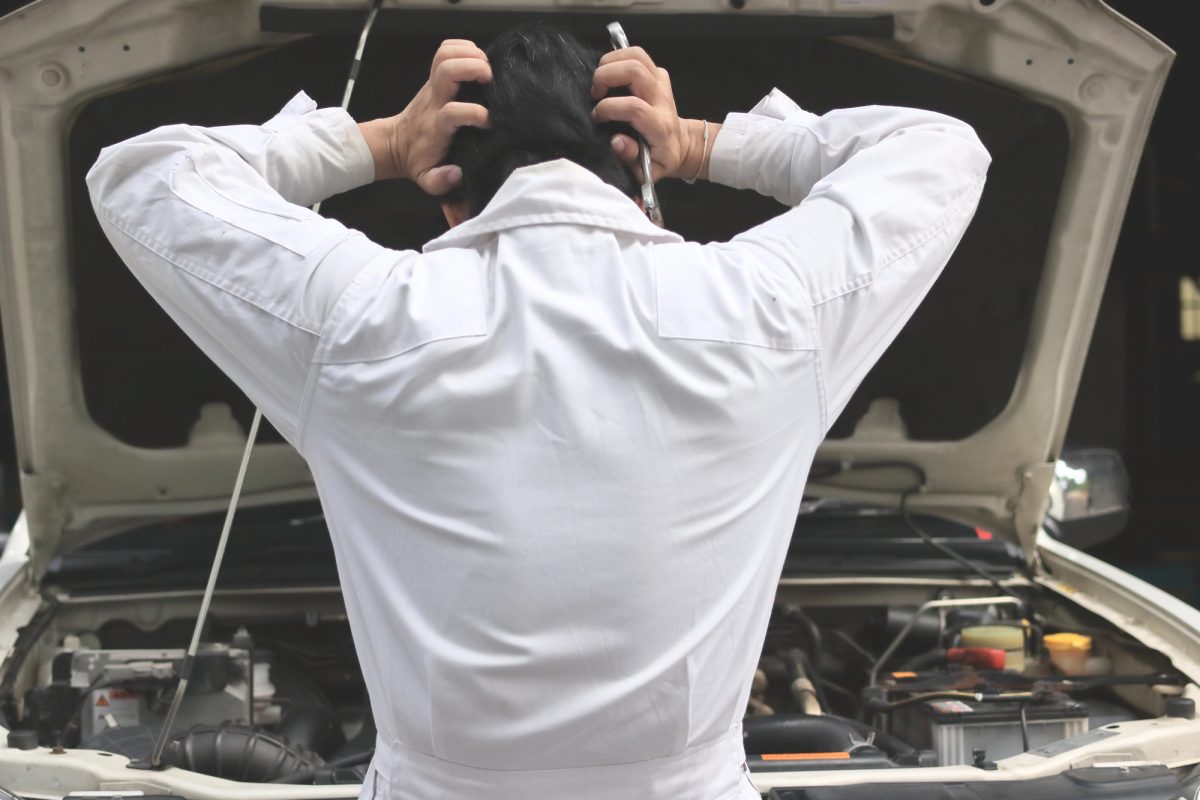When your car suddenly refuses to start, panic and frustration usually follow. But before you call for a tow or spend hundreds at a repair shop, there are often simple fixes you can try that may revive your vehicle. Knowing what to check and how to respond can save time, money, and unnecessary stress. Many drivers overlook quick solutions that are right under the hood or right in front of them. These 10 quick fixes could be the lifeline your car needs to spring back to life and get you back on the road.
Check the Battery Terminals

Corroded or loose battery terminals are one of the most common reasons a car won’t start, as they can block the flow of electricity. Carefully removing the buildup with a wire brush and reattaching the clamps tightly ensures a clean connection. This minor adjustment can often restore power and eliminate the appearance of a completely dead battery.
Jump-Start the Battery

A drained or weak battery may have enough voltage to power lights but not enough to crank the engine. Using jumper cables and another vehicle or a portable jump starter allows you to boost the battery and turn the engine over. Always follow the correct cable connection order to avoid sparks or short circuits during the process.
Wiggle the Gear Selector

Your vehicle might not start if the gear selector isn’t fully in the park or neutral position due to a sensor issue. Slightly shifting the gear lever or wiggling it while turning the key can help the system detect the correct gear. This simple movement may allow the car to recognize it’s safe to start, solving the issue immediately.
Try a Spare Key

Modern vehicles rely on chipped keys or key fobs that communicate with the ignition system. If your main key is damaged, worn, or has a dead battery, it may fail to start the engine. Switching to a spare key can determine if the fault lies with the original key and can save you a trip to the dealership.
Related: These 15 Common Motorcycle Mistakes Could Cost You Your Life
Tap the Starter Motor

A failing starter motor may become stuck or suffer from worn internal parts that prevent it from turning over. Tapping the motor lightly with a metal object, like a wrench, can temporarily dislodge the stuck components. It’s a quick and old-school trick that has brought many engines back to life long enough to reach a mechanic.
Related: 10 Motorcycle Mods That Will Instantly Elevate Your Ride
Check the Fuses

A blown fuse can shut down essential systems like the ignition or fuel delivery without any obvious signs. By consulting your owner’s manual and visually inspecting the fuse box, you can identify and replace any faulty fuses. Replacing a fuse takes seconds and can immediately restore the affected system’s functionality.
Related: 10 Insider Tips Every Rookie Must Know For Truck Driving Success
Tighten Battery Cables

Even if the terminals look clean, loose battery clamps can prevent proper power transmission from the battery to the starter. Wiggle the cables to check for play, then use a wrench to firmly tighten them in place. Once secured, the improved connection may allow the starter to engage and get the engine turning over.
Related: The Ultimate Truck Stop Bucket List Every Driver Needs To Visit
Pump the Gas Pedal (Older Cars)

In carbureted vehicles, pumping the gas pedal a few times before turning the key can help inject fuel into the engine for easier starting. This process primes the carburetor and increases the chance of ignition, especially in cold weather. However, be careful not to overdo it, or you could flood the engine.
Related: Truckers Swear By These Hacks For Staying Healthy On The Road
Try a Push Start (Manual Cars Only)

In manual transmission vehicles, a push start can be a lifesaver when the battery won’t turn the starter. With the ignition on and the car in second gear, push it to a jogging pace and release the clutch quickly. The momentum forces the engine to turn, and if all other systems are functioning, it can start the car effectively.
Related: Rookie Truck Driver Mistakes That Could Cost You Big Time
Disconnect and Reconnect the Battery

When electronic glitches occur, disconnecting the battery can reset your car’s onboard computer and clear temporary faults. Leave it disconnected for five to ten minutes, then reconnect and try starting the engine again. This reset process can solve issues related to immobilizers, alarms, and faulty sensors.
Related: The 10 Best Gadgets Every Trucker Needs In 2025
Dealing with a car that won’t start doesn’t always mean a costly repair or a long wait for roadside assistance. In many cases, the problem lies in something simple that can be resolved in just a few minutes. Being equipped with these quick fixes not only empowers you as a driver but can also save you money and valuable time. Whether it’s tightening a cable, swapping a fuse, or giving your starter a little nudge, having a basic understanding can make all the difference. These 10 practical solutions could be your best defense the next time your car unexpectedly gives up on you.
Disclaimer: This list is solely the author’s opinion based on research and publicly available information.
Is Your Car in Trouble? 15 Warning Signs and Fixes

Ignoring car warning signs can lead to costly repairs or even dangerous breakdowns. Whether it’s a strange noise, a warning light, or a change in performance, knowing what your car is telling you can save you time and money. Here are 15 common car warning signs and what you can do to fix them.
Read it here: Is Your Car in Trouble? 15 Warning Signs and Fixes
Here’s Why 90s Cars Are The New Gold Mine And Prices Are Exploding Overnight

The 90s are back in a big way, but this time, it’s not about fashion or music, it’s about the cars. Once overlooked as outdated, many vehicles from the 1990s are now considered classics, and prices are climbing faster than ever before. From Japanese sports cars to European luxury models, 90s cars have become a gold mine for investors and collectors alike. Here’s why these vehicles are attracting so much attention and why prices are skyrocketing overnight.
Read it here: Here’s Why 90s Cars Are The New Gold Mine And Prices Are Exploding Overnight
15 Insanely Complicated Cars That Mechanics Avoid

Some cars are known for their exceptional engineering, but that doesn’t always translate to easy maintenance. Certain models come with intricate technology, unusual designs, or parts that require specialized tools and knowledge, making mechanics think twice before working on them. These vehicles often lead to frustration, extended repair times, and sky-high service bills, making even the most experienced professionals avoid them.
Read it here: 15 Insanely Complicated Cars That Mechanics Avoid
You’ll love these related posts:
- 12 Motorcycle Insurance Hacks To Save You Hundreds Every Year
- These 10 Custom Motorcycles Will Make You Rethink Your Ride
- 15 Motorcycle Myths You’ve Been Lied To About For Years
- The Most Breathtaking Motorcycle Routes In America You Need To Ride
- The Pricey Mistakes Buyers Keep Making With New vs. Used Motorcycles


